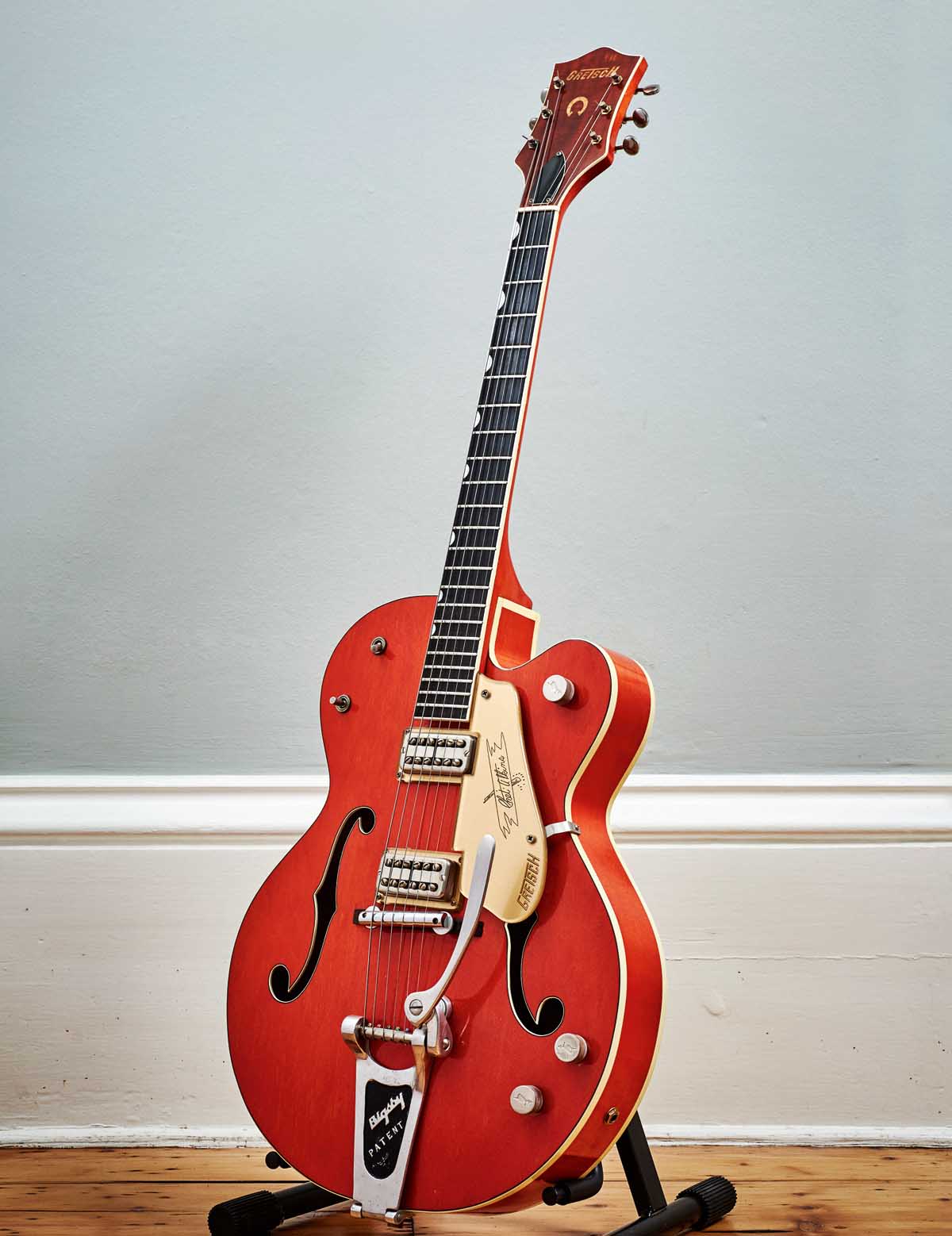How the Gretsch 6120 Chet Atkins became a rock ’n’ roll icon, played by Pete Townshend, Randy Bachman and more – before enjoying a triumphant second act in the hands of Brian Setzer
There are few cooler hollowbody electrics than the Gretsch 6120 Chet Atkins/Nashville, few more versatile. It has done country, rock 'n' roll, rockabilly and rock. This is its story

The Gibson Les Paul and Fender Esquire/Telecaster and Stratocaster solidbodies, and the Gibson ES-335 semi-hollow electric, rightfully rank as some of the most iconic guitars of the early days of rock ’n’ roll.
But another often overlooked guitar that deserves a spot right next to them is the Gretsch 6120. Originally developed by Gretsch as a signature guitar for Chet Atkins in 1954 (alongside the chambered “solid” body 6121 Chet Atkins signature “roundup” model), the G6120 was more warmly embraced by rockabilly and rock ’n’ roll guitarists than the country and western players Gretsch initially targeted.
Atkins himself wasn’t too thrilled with the 6120’s western-inspired decorations and bright orange finish, and he played the model for only a brief period before Gretsch developed his favored Country Gentleman guitar.
However, rockers loved the attention-getting orange glow, which remained on the model even after the western attributes disappeared. Eddie Cochran was the most notable early rock ’n’ roller to play a 6120, damaging the minds of countless impressionable youths when he performed Twenty Flight Rock in the 1956 film The Girl Can’t Help It. Duane Eddy’s 6120 later defined the sound known as “twang” on several hit instrumentals during the late '50s.

The 6120 originally was equipped with a pair of DeArmond single-coil pickups, but in late 1957 Gretsch swapped the pickups for a pair of its new Filter’Tron humbuckers. For most 6120 aficionados, the 1958-61 single-cutaway model is the ultimate version of the 6120 with its Filter’Tron humbuckers, ebony fretboard with Neoclassic/Thumbprint inlays, bar-style bridge, master/neck/bridge pickup volume knobs, three-way pickup selector switch and rarely used master tone switch.
The 6120 continued to make rock history during the '60s in the hands of players like Neil Young and Steve Miller. The mid-'60s double-cutaway 6120 model experienced very brief but important encounters with Eric Clapton (Yardbirds) and John Lennon (Paperback Writer sessions).
In the '70s, Randy Bachman used his 6120 to write and record with the Guess Who as well as several BTO hits like Takin’ Care of Business, and Pete Townshend played a 1959 6120 given to him by Joe Walsh to record guitar tracks on the Who’s legendary Who’s Next and Quadrophenia albums.
Get The Pick Newsletter
All the latest guitar news, interviews, lessons, reviews, deals and more, direct to your inbox!
The 6120 had become a forgotten relic relegated to dusty pawn shops during the late '70s, but when Brian Setzer hit the scene with the Stray Cats in the early '80s, the model became a modern rockabilly icon, later adopted by players like the Cramps’ Poison Ivy, Reverend Horton Heat and Chris Cheney of the Living End.
Setzer solely inspired the 6120’s resurrection in 1989, shortly after Fred Gretsch revived his family’s namesake company, and it could be argued that both Setzer and the 6120 saved Gretsch from oblivion.
Today Gretsch offers a wide variety of 6120 models, including Chet Atkins and Brian Setzer signature models in addition to standard Nashville models. There’s even a signature model for Atkins acolyte Steve Wariner, which brings the 6120 full circle back to its country music roots.
Thanks to the model’s incredible versatility that encompasses everything from raunchy rhythms to lush jazzy leads, today you’re as likely to see a 6120 in the hands of hard rock and punk players as you are to hear one churning out rockabilly, hillbilly jazz or a twangy instrumental.
Suggested rigs
A Filter’Tron-equipped Gretsch 6120 and a Fender Bassman – either a late-Fifties 4x10 tweed model as used by Eddie Cochran or an early Sixties piggyback head/2x12 cabinet rig that’s Brian Setzer’s preferred setup – is a match made in heaven. Add in some tape-style or analog slapback echo (90-100ms) and you’re ready to rock.
Or go for the throat and bang out some heavier, raunchier tones with a plexi-style Marshall amp; just watch out for feedback.
Chris is the co-author of Eruption - Conversations with Eddie Van Halen. He is a 40-year music industry veteran who started at Boardwalk Entertainment (Joan Jett, Night Ranger) and Roland US before becoming a guitar journalist in 1991. He has interviewed more than 600 artists, written more than 1,400 product reviews and contributed to Jeff Beck’s Beck 01: Hot Rods and Rock & Roll and Eric Clapton’s Six String Stories.
“It holds its own purely as a playable guitar. It’s really cool for the traveling musician – you can bring it on a flight and it fits beneath the seat”: Why Steve Stevens put his name to a foldable guitar
“Finely tuned instruments with effortless playability and one of the best vibratos there is”: PRS Standard 24 Satin and S2 Standard 24 Satin review












